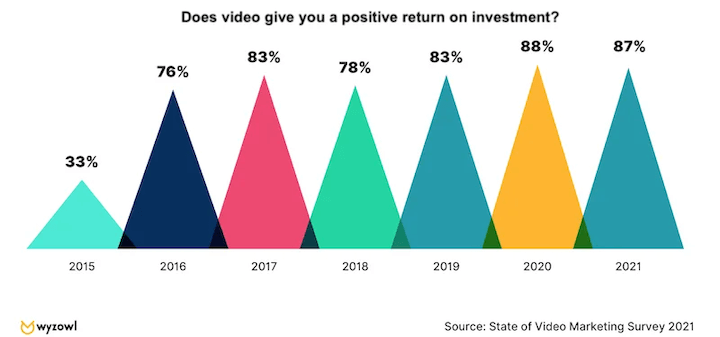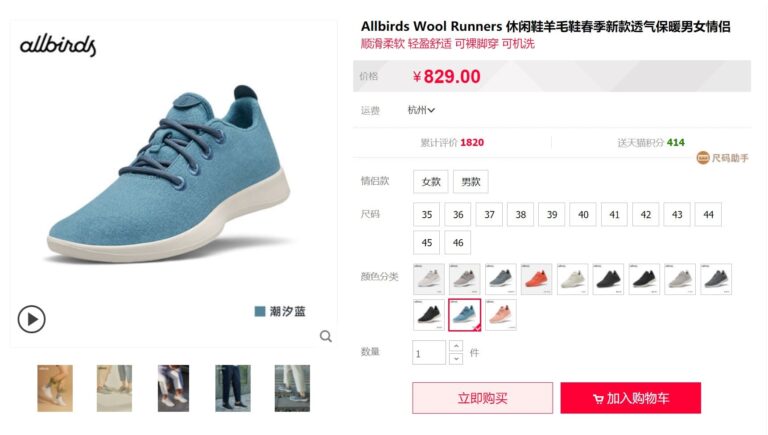15th Dec 2015 – 
Using quizzes to deliver personalized results can help grow a customer base that not only encourages purchases and returning buyers, but as a means of generating leads as well!
Although best practices says “removing fields in general works better”; it’s not about removing fields and having everything above the fold; it is about having a clear value proposition and what works best for your particular brand and audience. Always focus on your visitors, write for them, design for them.

When your metrics and goals are defined and before moving any further, segment the traffic by source, by behavior and by outcome in order to find the most profitable segments to consider in the split testing.
- Testing (998)
- Conversion (898)
- Customers (795)
- Visitors (531)
- Optimization (529)
- People (494)
- Product (481)
- Data (469)
- Users (443)
- Content (408)
The Original 7-Minute Workout
The conversations gets interesting when referring to conversions and choices (mentioned 33 times), a common topic in the industry that reminds us that “too much choice is overwhelming and often leads to customer inaction.”
According to Jennifer Pepper, Customer Success Content Strategist at Unbounce, choosing the right keywords so the page will appear in front of the user who is looking for this exact information, will not only help the results of your PPC campaign, but by creating great experiences your Quality Score and CTR will increase at the same time your CPC decreases.
Exercise 1: Research over Best Practices, Forms and KISS suggestions from ConversionXL
Best Practices and Lead Generation Forms
The suggestion is to run your tests longer, for at least 4 weeks -or until the sample size is achieved-, otherwise you may choose the wrong winner. You need enough transactions, absolute conversions and a long enough duration of time.
SiteTuners suggests starting with usability tests by interviewing people who are trying to use something. The recommendation is to test while you build them out. Once the prototype is ready, it’s time to apply user acceptance tests in the pre-launch phase.
If no one is looking for your content, no one will read the content you write.
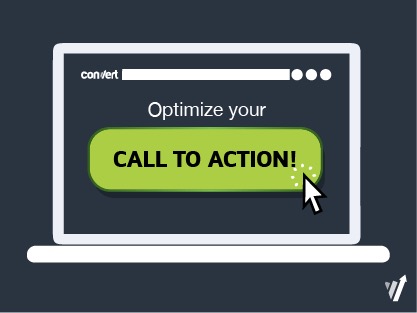
If so, you remember the two negative elements of choice:
It is also vital to consider the qualitative data. The best way of knowing why your visitor is leaving or buying is through surveys. There are several ways of surveying, from exit surveys in specific pages, to usability tests of a targeted group and feedback surveys from your clients. Once you start to see a tendency, it’s easier to understand which elements have a high impact when A/B testing.
Qualitative Research
If the whole process objective was to increase conversion, then it’s time to apply split tests, where you will test the page/tool that you already have with a slightly different version. As SiteTuners states, these tests increase your chances of turning visitors to clients because this “testing framework leaves very little to chance”.
A/B testing belongs to a category of scientific optimization techniques, where statistics is used to increase the odds that your site visitors will see the best-performing version.
Good luck! And once you are ready for A/B testing, try the most affordable enterprise A/B testing tool for free.
Peep Laja
Let’s remember that A/B testing is a process of four steps: Measure, Prioritize, A/B Test and Repeat.
While the Conversion Scientist blog seems to be all over the place with different topics in their last thirty posts, Conversion Voodoo’s blog seems consistent with a clear focus on e-commerce, mobile, and speed.
The ConversionXL blog aims to increase the knowledge of CRO statistics literacy, that’s why it is a great resource for talking about why statistical significance and validity are not the same.
Ton Wesseling
Do you know how to get your website in shape? We reviewed 300 recent conversion rate optimization (CRO) articles and their suggestions written by hundreds of different conversion optimization experts and combined them for you in a 7-Minute Conversion Daily Workout to get your online business fit and healthy for the upcoming year.
“When you’re listening to somebody, you are listening for reasoning, you’re listening for reactions, you’re listening for guiding principles.” – Indi Young, Author, UX Consultant and founding partner at Adaptive Path.
- Mean: This is the average. For conversion rates, it is the number of events multiplied by the probability of success (n*p).
- Variance: This is the average variability of the data.
- Sampling: Statistically representative sample of the whole, since a “true conversion rate” can’t be measured.
If you add a clickable phone number and offer a fast checkout, the chances are that the conversion will increase, as well as your sales. But, as Jon Correll says, “your gut isn’t enough, you must test, test, test”.
Offering your value proposition is another one of those times when more is not better, although that doesn’t mean that less is always more, sometimes more is more. Remember: testing and finding your sweet spot is the only way.
Jon Correll, CEO, and co-founder of Conversion Voodoo explains that the reason is that customers buy later on a larger screen, and having the option of saving their shopping cart by providing their email address is an excellent way to encourage completing the buying process at a later time.
Jaan M. Sonberg.
You’ll never know for certain what elements of the website are grabbing visitors’ attention unless you run A/B test series. What are the smallest details responsible for the customer taking action? It’s a competitive online world and it is time to try experimenting with different copy, design, choice of imagery, etc.
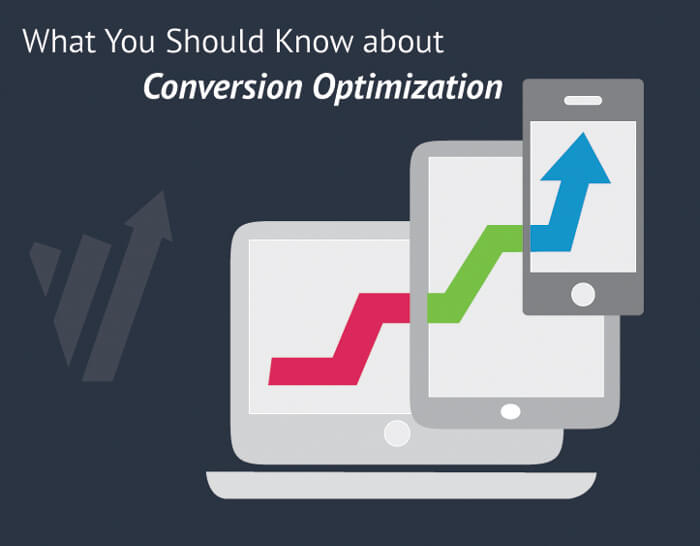

The last thirty articles focused primarily on having a defined goal that allows you to have a clear perspective on your optimization path. Once you prioritized your ideas, it’s time to start testing in order to implement changes that will help to increase conversion. There’s no room for intuition, every decision must be analyzed.
An optimized landing page is best designed through your customer’s eyes. The conversion goal is the first thing to have in mind when designing a new landing page. This approach will help you to know exactly what information to use, what to ask for, what elements to use and how to design your page for your customer.
When talking about content marketing, Spencer Lanoue, Growth Marketer at UserTesting recommends a good start is doing user research, this will make it easier with the creation of user personas which will provide valuable and useful content and relevant experience.
Make sure you optimize your site to its full potential before investing in any advertising campaigns. Remember that the whole idea of A/B testing is to actually ‘know’ your visitors preferences and to stop ‘assuming’ you know what they prefer. 
KISS: Paradox of Choice and Ego Depletion
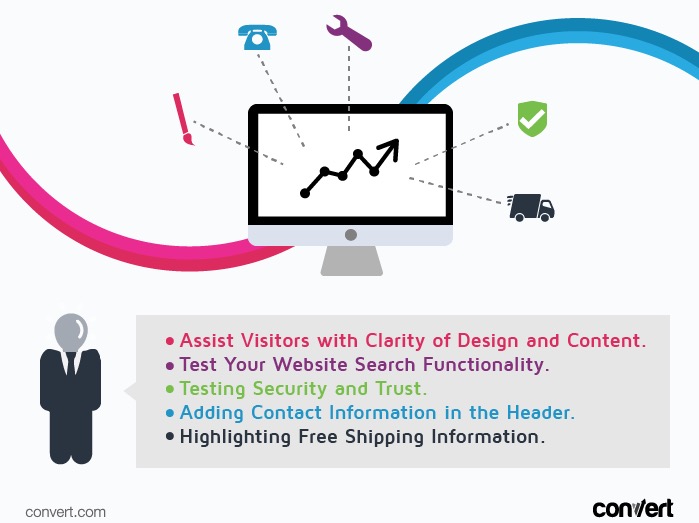
To gather the information for A/B testing to optimize the checkout funnel of an e-commerce company and improve the conversion rate, collecting the qualitative data of the visitors and clients is key, and for that you’d use surveys, heat map, live chat, user testing and support tickets.
- Analysis Paralysis: is over-analyzing (or over-thinking) a situation where a decision or action is never taken; in effect, paralyzing the outcome.
- Buyer’s Remorse: is the sense of regret after having made a purchase. It may stem from fear of making the wrong choice, guilt of extravagance, or a suspicion of having been overly influenced by the seller.
Optimizing for a lazy brain by presenting fewer choices that are different with a clear call to action visually emphasized (mentioned 25 times) will help you to increase your sales.
- Keep things simple,
- Avoid frustration,
- Deliver a perfect value proposition.
After the studies and hypothesis, all conversion blogs are clear on one thing: testing, testing, testing. A/B testing is the most popular instrument to move your conversions forward. Get in shape for 2016… workout your site for conversions.
Good UX is a great investment (mentioned 32 times) and good marketing. By creating unique experiences, you create a positive impact when delivering your message; a message that users will remember and share and maybe most importantly, return to.
It’s becoming more popular to create online quizzes (mentioned 132 times) that drive sales, according to JP Misenas, Content Marketing Director of Interact. In order to achieve more sales, your quiz should include the personality of your brand, by using simple questions with visuals and even some humor you can not only provide recommendations about your product but even generate leads using a lead capture form.
Exercise 2: Testing, Testing, Always Be Testing
When talking about landing pages, Brian Massey’s articles not only focus in the key factors to test and increase CRO but also in how to increase SEO from the landing pages that receive the most organic traffic, in other words, by understanding the effectiveness of your SEO landing pages.
If you end the test early, there’s always a greater chance that you will pick the wrong winner.
Dan Croxen-John, CEO of AWA Digital.
Invest in the Hypothesis and Speed
Did you know that hundreds of marketing experts agree that testing is the most important step to move your business forward? It is mentioned 998 times in the 300 articles from the ten key marketing blogs that we analyzed. Below you will find the top ten most used words in their blogs, and we will dive deeper into all the recommendations to help you to get your site into shape with this Conversion Workout.
In order to optimize your website, it’s obvious that Optimizely still recommends to do A/B testing (mentioned 167 times). You should test all the time.
Good optimization teams are focused on long-term revenue lifts, not quick wins. A successful optimization program requires discipline, patience and a long-term view of results.
Unbounce content is mostly about people and how to reduce anxiety, connect better and reduce the bounce rate on the landing pages. One last suggestion they have that we support is testing trust seals and SSL certificates. Google also recommends this for SEO, so test or implement.
A recurring theme in the always great Unbounce blog is that just writing for the sake of writing in your company’s blog is pointless. For example, this blog has a very specific purpose, with strategic quotes and a well-defined audience.
Bobby Hewitt, Creative Thirst.
Exercise 3: Make the People Connections, says Unbounce
There’s no way to understand online behavior without testing, analyzing data (mentioned 204 times) and Google Analytics (mentioned 103 times), of course, Online Behavior blog knows it and writes about it.
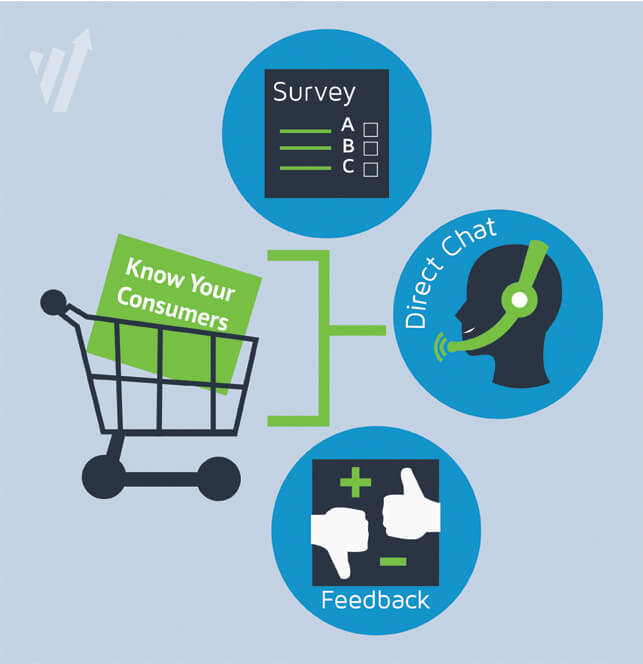
Landing Pages Are About People
The thing about A/B testing is that it requires time and patience for it to be successful. In regards to time, it’s important to remember that before you start A/B testing, one of the things you need to ensure is the website speed is running at peak performance.
It’s impossible to talk about statistical significance without considering the “P-Value” that measures evidence against the null hypothesis. Don’t confuse yourself, it does not tell us that the probability of B is better than A. In Alex Birkett’s words, “The P-value is just the probability of seeing a particular result or more extreme given that the null hypothesis is true.”
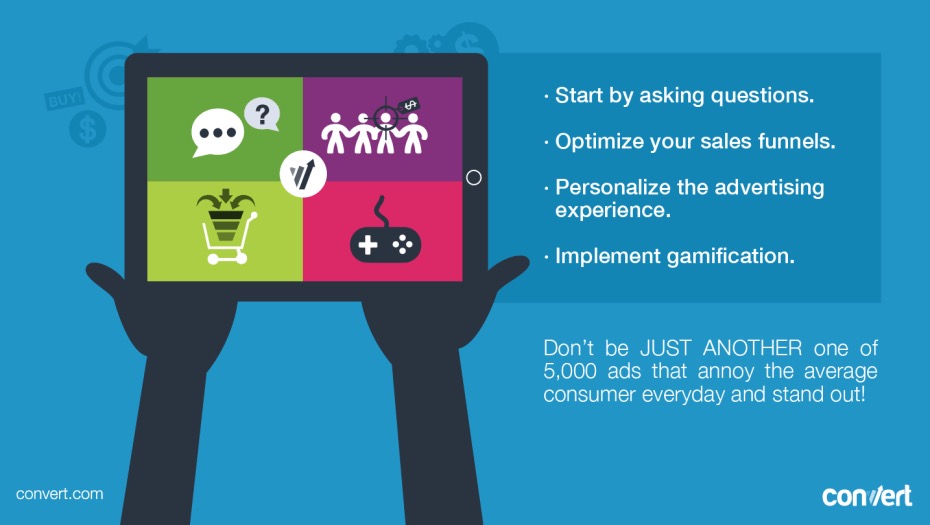
The Conversion Scientist blog focus on how to win market share by increasing conversion (sales) when triggering emotions (mentioned 29 times). As Terri Scott, Content Marketing Storyteller explains, it’s not a secret that historically there are several brands applying different triggers such as: altruistic, philanthropic, sense of belonging, inspirational, self-actualization, pride, urgency and more.
Minimizing mental strain by ensuring elements are where people expect to find them, having pages easy to absorb and avoiding the clutter of ‘pretty’ pages that distract users from the desired action, your site will improve conversions.
Understand & Research the People’s Words
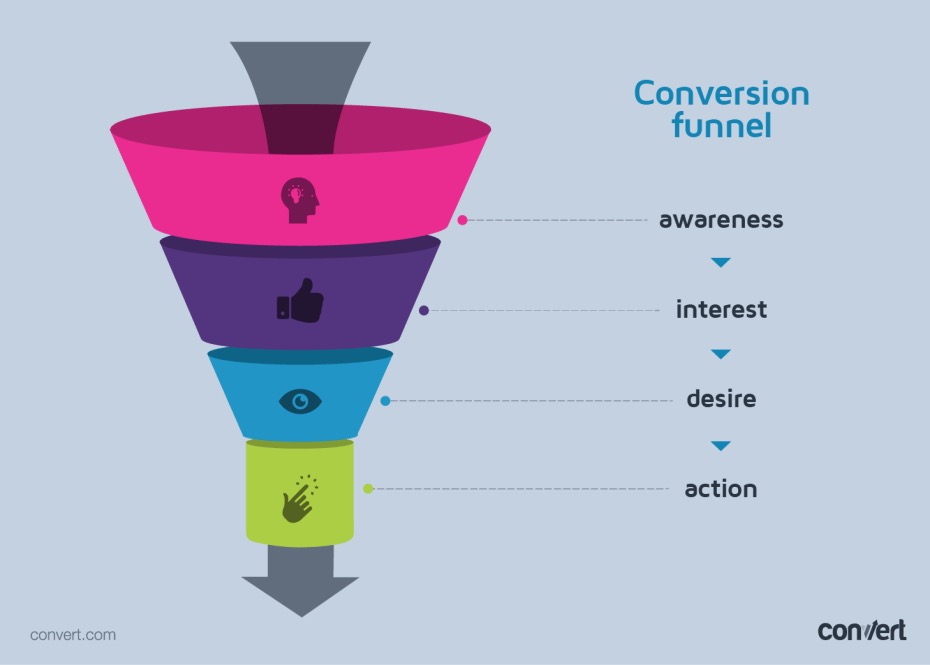
There’s a lot you can learn about your business and customers from A/B testing, but you cannot move forward unless you understand the goals and research where people drop out of the funnel (flow) before attaining the goal. The more time you put into understanding the funnel and the hypothesis that comes from analyzing where people flow out of the funnel, the more you will get out of A/B testing.
It’s not a surprise that Unbounce writes about how creating the most effective, simple and intuitive landing pages will increase your conversions by focusing on creating better marketing experiences for the user. They not only write that you should make them, they focus much of their content on education and assisting those who create landing pages.
Dan McGaw, CEO of Effin Amazing
Continual research and user testing are the two pillars that will help you to keep your relationship with your users healthy and strong.
Exercise 4: Conversion Scientist wants you to Focus on Emotions, Millennials and Quizzes
As Alex Birkett says, more choices can lead to a poor UX. Limit the trivial decisions that the user has to take and you’ll increase not only conversions, but sales. Keep It Simple, Stupid: KISS and start by defining one goal and one desired action per page, and provide the optimal amount of options to choose.
Millennials are an Interesting Audience
Each recommendation is a 7-minute exercise (according to Medium’s research into readers preferences) and each combines the top ten suggestions from one of the most read conversion rate optimization blogs in the industry.
It’s good to see the blog is consistent in content with the product of UserTesting and research is one of the main topics (mentioned 96 times) in the recent blog posts. They say that you cannot start making changes if you don’t understand what’s wrong. This again, is a very consistent topic we find in most conversion blogs.

Mobile pages (mentioned 93 times) as well must be optimized for speed (less than 3 seconds to load) and provide a seamless user experience and navigation. Keep the page clear of pop-ups, allow the user to filter by categories and help them find what they need.
Quizzes New CRO Tactic
Best customer experiences are personal, that’s one of the reasons of why personalization has become stronger year after year, although understanding your visitor and targeting them in real time remains challenging.
JP Misenas.
Once you identify the point of friction in the form, create an hypothesis, prioritize, test and analyze results. Some things to look for are the time it takes to fill each field, abandonment rate per field and error messages sent to users.
As Alex Birkett says, conversion optimization is about balancing risk; a fundamental problem solved by statistics.
Exercise 5: Conversion Voodoo Blog Focuses on Mobile, e-Commerce, and Speed
The main focus of Invesp blog is centered around the concept of optimizing the conversion funnel instead of optimizing the conversion and sales idea. It begins by developing your unique selling proposition and having your customer’s journey in mind.
Data driven is not only the future of marketing but is what allows businesses to gain insights for implementation of the best strategies.
Here is where copywriting plays a crucial aspect, the copy should compel action. The recommendation is to create clear and direct copy oriented to the customer and not the product.
They mention landing pages 138 times in their last thirty posts. Other hot topics for Unbounce are content (99 times), marketing (61) and Google (50). But what does Unbounce say on the most mentioned topic: people?
Measuring the full customer journey is not a new idea, nor an easy one considering how difficult it has been to integrate all the data, as Siegfried Stepke, founder and CEO of e-dialog, says, “those days when having only partial insights and data from the customer journey lead to wrong decisions are over. With the integration of Google Analytics Premium and the DoubleClick Campaign Manager (DCM) it is now possible.”
Conversion optimization is ‘experience optimization’: When your customers perceive a better experience on your site, they are more likely to convert.
The general opinion of the ConversionXL blog as demonstrated in the articles we reviewed is that you shouldn’t follow best practices and consider them true to your situation without doing research and A/B testing. Do your conversion analysis by using best practices as suggestions for areas of improvement but always investigate where your site has opportunities and where your visitors struggle.
Exercise 6: According to SiteTuners, Using Frameworks, Offer Less Choice, and More Visuals Drives Conversions
Another way to prioritize optimization efforts is the WiderFunnel’s PIE framework: Potential, Importance, and Ease. But whatever method you choose, once finished, it’s time to formulate a clear hypothesis for your A/B test.
The final step is to integrate your A/B testing process with conversion rate optimization methodologies. You must chose a framework and work on it constantly. The most popular are:
Optimizely is a competing product to ours but we must admit that their blog is all about creating the best marketing experience for your visitor, and a great read to stay on top of trends.
Less Choice and Move Visual Options
Alex Birkett explores a third one: decision fatigue, -also known as ego depletion- in his article on ConversionXL. Alex’s article is reflective of the general theme of the ConversionXL blog, where the ideas are:
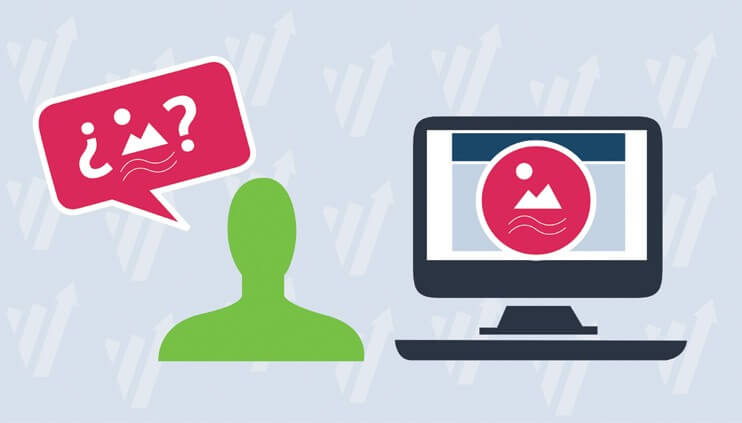
Once the statistical significance of your test is at 95% or more, and you’re confident about the winning option, you’re ready to continue testing. CRO is an endless journey.
That’s why if you need to create a Google Analytics powered widget or learn how to do Data Landscaping (mentioned 21 times) this is the blog you should follow.
Exercise 7: Research Finds Your Online Problems, Show Empathy and Fix the UX Says UserTesting
A landing page starts there and according to Stephen Da Cambra; an optimized funnel is an evolutionary process from one section to another, and not a series of steps. Along this process, talk to the customer, communicate with them, understand their problem and offer the right solution.
Good Research Drives UX
The objective is to have your first interaction with your user as simple and painless as possible, remember that it’s the gate to your conversion funnel (AKA: your lead gen form).
After spending the last seven minutes with ConversionXL’s awesome suggestions we take a look at the second exercise in our conversion rate optimization workout. The next seven minutes we spend with the best recommendations from the last thirty posts of Convert’s own blog.
Jennifer Winter, Marketing Content Writer for UserTesting.
The 7-Minute Conversion (CRO) Workout is a compact exercise series of ten exercises that help you optimize your webpage to the max. It’s based on the 7-Minute Workout popularized in 2013 that was developed by the Human Performance Institute in Orlando and published in the well-known American College of Sports Medicine’s Health & Fitness Journal and then picked up by the New York Times.
From email marketing hacks to improving conversion rates (mentioned 82 times in last thirty posts) to leveraging the power of mobile marketing for your e-commerce landing pages, the Conversion Voodoo blog emphasis on testing on a constant basis and never quitting.
Stef Miller, Marketing Manager of UserTesting.
Empathy Drives Good UX
Getting your scientific conversion workout means 7-minutes for each exercise. If you want to start optimizing, most exercises and blog suggestions focus on understanding your visitor.
Unbounce articles are clear: they are always advocating that your marketing efforts are for real people. Their blog content highlights the importance of using Google as one of your top resources for your marketing strategies. From Adwords to Keyword Planner, Analytics and URL parameters (AKA: UTM variables), Google is your friend.
Even if your customer tends to buy from a desktop and uses their mobile to browse, according to Smart Insights study, e-commerce business must focus on creating optimized mobile landing pages.
Exercise 8: There is no Magic Pill says the Invesp CRO Blog

Conversion Voodoo’s recommendation is to make the online shopping experience as painless as possible. Always test different designs of the e-commerce pages (mentioned 84 times) and make sure that the page design, visuals, copy and call to action match the marketing campaign and the message you’re sending the visitor before they get to your page (AdWords or Social Media).
Stephen Da Cambra, Copywriter and Social Media Manager.
Landing Pages Are Still Important
Do you remember Barry Schwartz and his memorable Ted Talk on the paradox of choice?
Invesp agrees that understanding the customer’s journey and problems are the key factors in making CRO work, but in their last thirty articles don’t offer an in depth way to get to these insights.
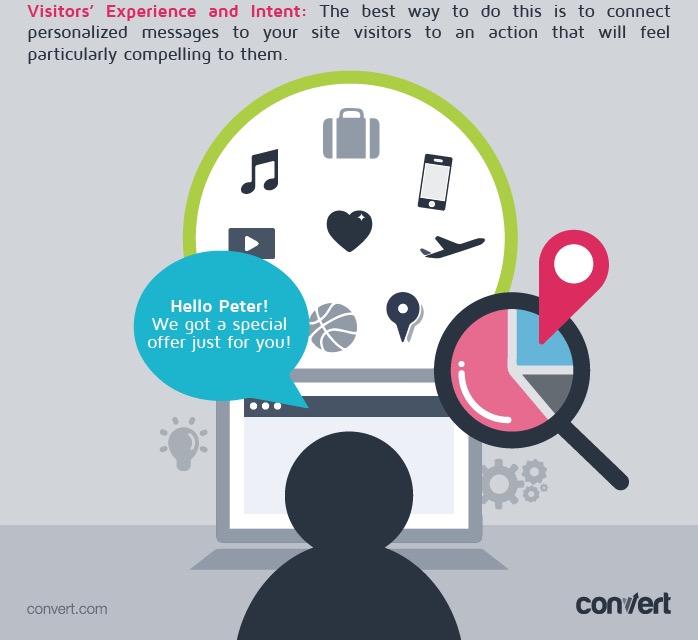
By lowering the frustration of mismatched visitors, these people will appreciate that the value proposition is clear and you are not wasting their time. It allows them to stop the search and explore your offering deeper when they see a match between their needs and your proposition. It’s people; the person behind the screen that you need to ultimately remember.
In regards to funnels, don’t forget the importance of optimizing mobile funnels, if you want to keep your business up to date, you must consider mobile conversion as a pillar of your marketing efforts. Follow the same process; create clear goals, prioritize your experiments, test, analyze, measure and keep the winner.
Many personalization frameworks fail because of the micro-content pieces that need to be created to fit the personas and flows and we hope Optimizely found an interesting solution to account for that.
Exercise 9: Data and Data according to Online Behavior
While this may seem like it’s about marketing tools and ways to improve sales, understand this is actually about people. The more clearly you can illustrate your offering, the faster and more effectively the search engines and visitors will find you.
Small changes can make a big impact, but big impacts don’t happen too often –most of the time, your variation is slightly better– so you need more data to be able to notice a significant winner.
Empathy (mentioned 52 times) is about people, and the only way to be empathic is to listen to your users and customers.
Daniel Waisberg, Analytics Advocate at Google and the Founder of Online Behavior.
Constantly improving your marketing strategy can be the key in having a very successful online business. If your business does not grow or evolve, then it is almost the same as moving backwards, because you can be sure that your competition will be constantly improving.
The UserTesting blog is centered in delivering great experiences to the user. User experience is the relationship with your buyers that you can’t ignore.
As Peep Laja explains, statistical significance does not mean that the probability of B is better than A, neither the probability that selecting B over A will be a mistake. Both are common misconceptions.
Krista Seiden, Analytics Advocate for Google
Exercise 10: Enterprise Personalization but A/B Testing at Core According to Optimizely
It seems ConversionXL and SiteTuners are very much in line about how to increase conversions, although they are using very different articles to get to that point. We recommend reading both since they are complementary blogs. Consistent with these blogs, UserTesting’s blog is convinced that research is the start of the conversion optimization process.
Enterprise Personalization Optimizely’s New Push
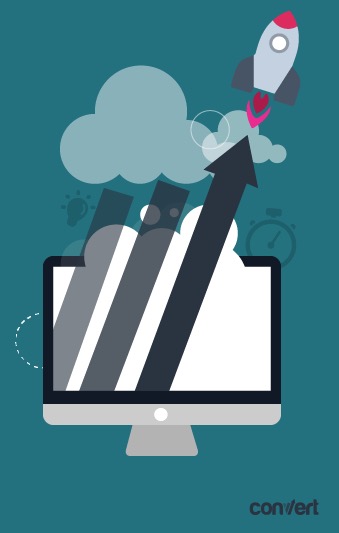
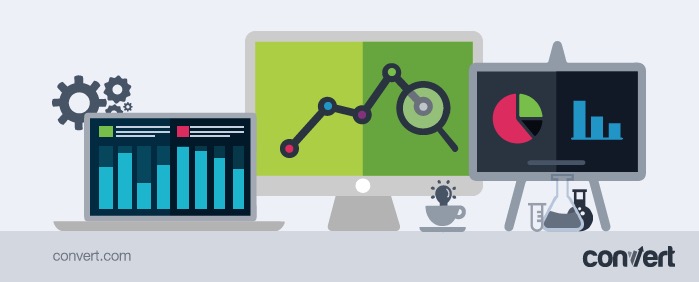
She reminds us that Millennials are a new type of consumer. By understanding their online habits, most popular communication channels, and lifestyle, there’s a better chance to set in place an effective marketing strategy to convert a Millennial into a client.
There are three terms you should know before we dive into the nitty-gritty of A/B testing statistics:
A/B Testing is the Core in e-Commerce
Hot keywords in their recent content are: form fields, research, qualitative and “the fold”. Some of their returning recommendations are qualitative research and improving lead generation forms (like those found on landing pages).
A very interesting approach from Julie Ellis is about marketing strategies for Millennials (mentioned 33 times), considering that is the first generation (mentioned 47 times) that have had any internet device from an early age.
Process is important. Process leads to consistency, repeatability, and authority in a testing program. Sharing that process and getting others in your organization bought in and supportive is, even more important.
Conversion optimization is about testing, according to most of the content recently posted on the SiteTuners blog, and it explains the different tests available to consider and apply. Their content also suggests using a framework similar to what we have read in the ConversionXL blog.
You can use Google’s Keyword Planner, but Dan McGaw suggests to perform content audits on your competitors. And once you identified the best keywords and blog ideas, you can convert through content, via landing pages.
Chris Goward, WiderFunnel
Conclusion
You need to add “time” to the formula. To avoid imaginary lifts in your experiments, they need to be running for a long enough period of time. Otherwise you’ll have false confidence and could mistakenly apply what you think you learned on your site.
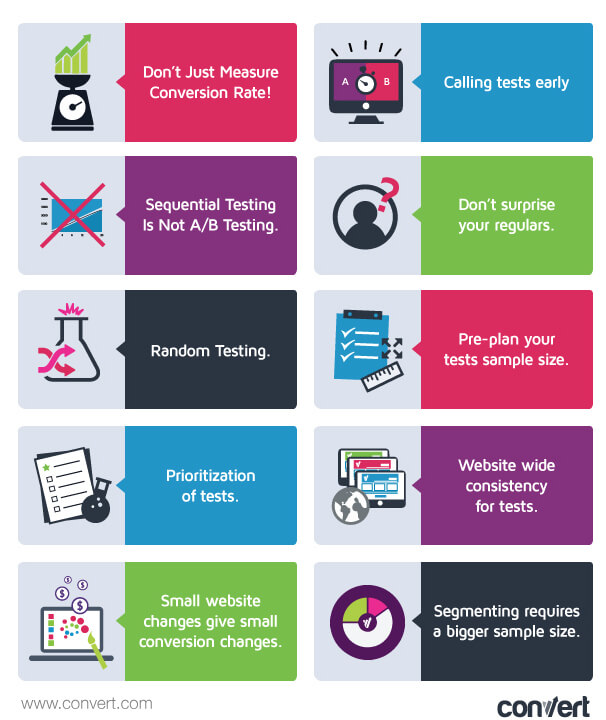
Invesp blog reminds us to make CRO the basis of everything we do online (with over 164 mentions of the word CRO and conversion), but also reminds us that it’s not a magic pill. For e-commerce, conversion rate results increase at a slow pace. Why this happens? Primarily because budget is spent mostly on traffic and not in converting visitors.
A/B testing is number one for improving website conversions and is shown to increase profit by 20% in their annual profits.

